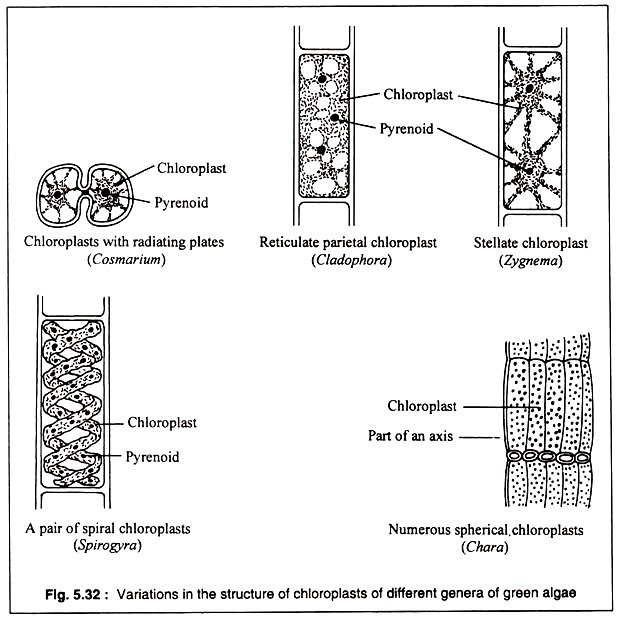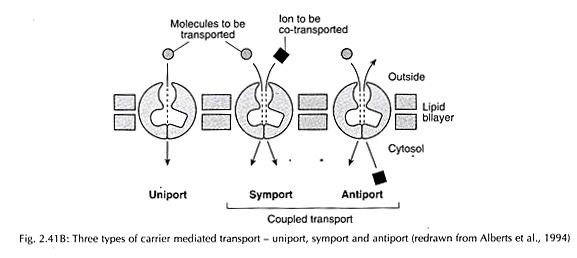Water is said to be the “Elixer of Life”. The dictionary meaning of ‘Elixer’ is ‘a magic liquid that is believed to cure illness or to make people live forever’.
Life originated and evolved in water. The water content of animal body is more than 70%. All forms of life depend on water and life is not possible without water.
Water is an ideal triological solvent having neutral pH. It is colourless, odourless and taste-less in pure form.
Water gets polluted due to contamination i.e. addition of pollutants such as domestic, industrial, physical, chemical, biological and so on. Water pollution basically means any physical or chemical change in water that adversely affects the health of human beings other organisms. Water pollution, at present, has become a global problem. The extent of pollution varies from country to country and plea to place. In developing countries several epidemics are linked with contaminated water.
Sources and Effects of Water Pollution:
Depending upon source or type of contaminant water pollution may be nutrient pollution, bacterial pollution, viral pollution, metallic pollution, petrochemical pollution, pesticide pollution, thermal pollution and radioactive pollution etc. The water gets polluted through natural or man-made activities.
Some important natural and man-made sources of water pollution one discussed below:
1. Sewage and Domestic Wastes:
Domestic sewage contains mostly organic wastes such as domestic garbage detergent, waste food, paper, cloth, toiletries and human excreta runoff water due to bathing, laundering, food processing, house-hold washing etc. About 75% of water pollution is caused by sewage and domestic wastes. Domestic sewage mostly contains organic wastes. When these are released to water bodies, they consume lot of oxygen to be digested. The amount of oxygen consumed to digest them is called as Biological Oxygen Demand (B.O.D.).
If the volume of incompletely digested sewage is of small amount in comparison to the volume of water into which it is released, the oxygen demand may be easily satisfied. But when the quantity is more, oxygen demand is not satisfied creating an oxygen deficient situation which is harmful for the aquatic organisms.
Near the point of effluent discharge, the bacterial population rapidly increases. There is active growth of sewage fungus. Protozoans feeding upon bacteria increase in number but O2, deficit causes a decrease of algal and clean water fauna. Fish, being sensitive to dissolved oxygen concentration are often eliminated and only a few invertebrate species can exist in low O2 concentration.
On the other hand, completely oxidised sewage in water bodies creates problems because of its heavy load of phosphorus. The stimulates luxuriant algal growth which in turn create pollution when they die and decay.
2. Industrial Wastes and Effluents:
Industries produce a lot of organic and inorganic wastes which ultimately comes to water bodies and cause water pollution. The toxicity of aquatic environment not only affect the fish population but also accumulate at the bottom of water bodies and poison the bottom dwellers. Resistant objects like cans, tyres, metals, polythene and plastic wares add further pollutants to the water bodies. (Table 9-3).
3. Pesticides:
These are synthetic chemicals used for pest control. The runoff from the agricultural fields is a major source of pesticide pollution of rivers, streams and lakes. Some pesticides also enter inland waters from the industries. Pesticides adversely affect a wide range of aquatic organisms including insects and fishes.
Many of these chemical compounds are quite stable. Some of them break down partially to form more toxic compounds. Most pesticides used to control harmful insects are either chlorinated hydrocarbons (DDT, endrin, aldrin) or organic phosphorus compounds (malathion). These are stable and accumulate in tissues of aquatic animals. Further accumulation occurs in animals at higher trophic levels.
4. Detergent and Fertilizers:
The washing materials are commonly called as detergents. They are composed of complex phosphates which break down into phosphates and other chemicals. The phosphates are used by aquatic plants and ultimately cause an increase in phosphorus in sewage effluents. Fishes and aquatic invertebrates are affected by the detergents.
The chemical fertilizers are mostly compounds of phosphates, nitrogen’s and potash. These are not biodegradable and go to water bodies by surface run off then affecting aquatic life.
5. Toxic Metals:
Mining operations and metallurgical laboratories are responsible for release of various heavy metals such a lead, mercury, arsenic, chromium, carmium, copper, zinc etc. Mercuric compounds in water are converted into monomethyl and dimethyl mercury using methane released from anaerotric decomposition of organic wastes.
Both are highly toxic and non-dedradable, causing chromosomal damage and with toxic effect on liver, kidney and gills of fishes. Toxic metals responsible for air pollution (e.g. lead, Nickel, cadmium) may also reach water and harm aquatic animals. The following table gives a detailed statement of the metal and its toxicity.
6. Suspended Solids:
These are physical water pollutants. For example, silt is a fine sediment carried to rivers by number of ways including surface run off. Silt increases the turbidity of water which affects the productivity of an aquatic environment and the growth of fishes.
7. Thermal Pollution:
Various industrial processes may utilize water for cooling and resultant warmed water has often been discharged into streams or lakes. Coal or oil based generators, atomic energy plants generate large amount of waste heat which is carried away as hot water and cause thermal pollution.
Table 9.5. Various Factors Causing Water Pollution:
Now, let us discuss, some of the significant ecological phenomena arising in relation to water pollution.
Dissolved Oxygen (DO):
Dissolved oxygen content of water is important for survival of aquatic organisms. Water having dissolved oxygen content (DO) around 8.0 mg It1 is considered to be normal and suitable for aquatic life. Heavily polluted water has DO content less than 4.0 mg Lr1. Organic and inorganic wastes decrease DO content of water bodies.
Biochemical Oxygen Demand (B.O.D.):
The organic wastes are water bodies utilize dissolved oxygen for their degralation BOD is the amount of oxygen used for biochemical oxidation by microorganisms in unit volume of water. The demand of oxygen is directly related to increase input of organic wastes. So BOD is a measure of oxygen required by aerobic decomposers for the biochemical degradation of organic materials (biodegradable materials) in water. BOD value is directly correlated with the amount of oxidisable organic matter. Therefore, BOD is used as a measure of degree of water pollution.
Chemical Oxygen Demand (C.O.D.):
It is the amount of oxygen required by organic matter in a water oxidant for its oxidation by a strong chemical oxidant. It is a measure of pollution load in water. This is a measure of oxygen equivalent of the requirement for oxidation of total organic matter (i.e., biodegradable and non-biodegradable) present in water.
This value is a poor measure of strength of organic matter, as oxygen is also consumed in the oxidation of inorganic matter such as nitrates, sulphates, reduced metal ions and some organic molecules such as benzene, pyridine that are not oxidised by this process.
Eutrophication:
It is the natural ageing of a water body by nutrient enrichment of its water. For example, when a lake is well nourished with high level of nutrients and organic wastes, there will be profuse algal growth, especially the blue green algae (cyanobacteria). Such profuse growth of algae is called algal bloom.
Such algal blooms completely cover the water surface. The blue green algae release toxins in water and gradually cause deficiency of dissolved oxygen in water. Therefore, in the algal bloom infected water body the growth of other fresh water plants and animals is checked due to algal toxins. They aquatic animals may die because of toxic effect or lack of oxygen.
If these activities persist for a long time, the pond has more organic matter and less water. Pollution like industrial effluents and sewage speed up the ageing process. This process is called eutrophication. Eutrophication is an irreversible process. One the process starts it cannot be converted back to a normal water body.
Biomagnification:
Many pesticides such as DDT, aldrin, dieldrin have a long life time in the environment. They are fat soluble and non-biodegredable. The phenomenon through which certain pollutants are accumulated in tissues in increasing concentration along the food chain is referred to as biological magnification or biomagnification. These toxic pesticides get incorporated into the foodchain and ultimately deposited in the fatty tissues of animals and have being.
Once these materials are incorporated into food chain, gradually they pass on to higher and higher trophic levels and get magnified. Biomagnification has also been reported for certain other pollutants, such as heavy metals like lead, mercury and copper and radioactive substances as strontium-90. (Fig. 9.2)
Control Methods of Water Pollution:
When pollutants are discharged into water bodies through pipe or sewer line, the source of water pollution is called point source. When pollutants enter from all sides, rather than a single point e.g. in case of agricultural run-off accumulation in a lake, the source is known as non-point-source. Point source pollution can be controlled through certain primary, secondary and tertiary treatments but in case of non-point source pollution control is not possible.
In case of point source pollution primary treatment should be given at the site of pollutant disposal. All industrial units should have their own pollution treatment plants. Effluent treatment can be carried out using oxidation ponds. First the suspended matters are allowed to settle down. Then, the dissolved organic matters are allowed to oxidize gradually and aerobically by microbial activity. Finally pH is regulated near to neutrality, BOD value is assessed and chlorination is done to kill harmful pathogens. Now the effluent is harmless and can be discharged.
Secondary treatment is a biological process and carried out by the activity of microorganisms. In this treatment, the waste water is pumped in shallow stabilization or oxidation ponds, where the microorganisms oxidise its organic matter.
Tertiary treatment is a physiocochemical process, which removes turbidity in waste water caused by nutrients such as nitrogen, phosphorus etc., dissolved organic matter, heavy metals or pathogens. This step involves chemical oxidation of waste water by strong oxidising agents like chlorine gas, perchlorate salts, ozone gas and UV radiation. After tertiary treatment the waste-water is discharged into neutral water.
 Recycling of various kinds of wastes is the best method of prevention and control of water pollution. For example, dung of cows and buffaloes can be used for the production of gobar gas a cheap source of fuel and manure.
Recycling of various kinds of wastes is the best method of prevention and control of water pollution. For example, dung of cows and buffaloes can be used for the production of gobar gas a cheap source of fuel and manure.



